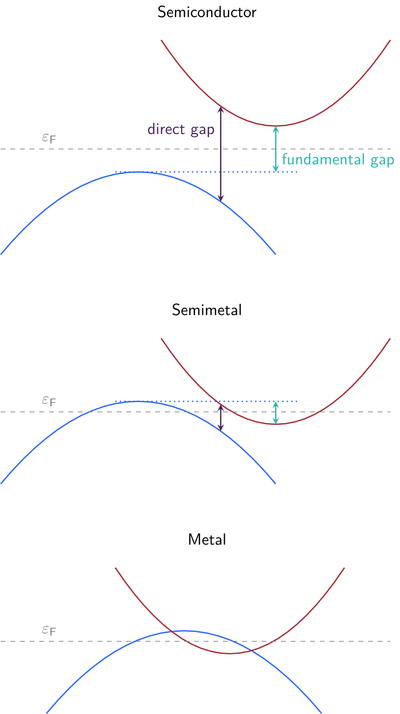BANDGAP: Difference between revisions
No edit summary |
No edit summary |
||
| Line 8: | Line 8: | ||
For metals, defining a bandgap is not meaningful.]] | For metals, defining a bandgap is not meaningful.]] | ||
VBM: valence band maximum | |||
CBM: conduction band minimum | |||
*{{TAG|BANDGAP}}=COMPACT | |||
: Uses Fermi weights to decide what valence and conduction bands are. Reports the VBM, CBM, and fundamental gap to the OUTCAR file. | |||
*{{TAG| | *{{TAG|BANDGAP}}=WEIGHT | ||
: Uses Fermi weights to decide what valence and conduction bands are. Provides a comprehensive report of all band extrema. | |||
*{{TAG| | *{{TAG|BANDGAP}}=KPOINT | ||
: | : Considers each '''k''' point individually to decide what valence and conduction bands are. Provides a comprehensive report of all band extrema. | ||
== Related tags and articles== | == Related tags and articles== | ||
Revision as of 12:05, 17 October 2023
BANDGAP = COMPACT | WEIGHT | KPOINT
Default: BANDGAP = COMPACT
Description: BANDGAP determines the verbosity of the output for reporting the bandgap to the OUTCAR file.

VBM: valence band maximum
CBM: conduction band minimum
- BANDGAP=COMPACT
- Uses Fermi weights to decide what valence and conduction bands are. Reports the VBM, CBM, and fundamental gap to the OUTCAR file.
- BANDGAP=WEIGHT
- Uses Fermi weights to decide what valence and conduction bands are. Provides a comprehensive report of all band extrema.
- BANDGAP=KPOINT
- Considers each k point individually to decide what valence and conduction bands are. Provides a comprehensive report of all band extrema.
